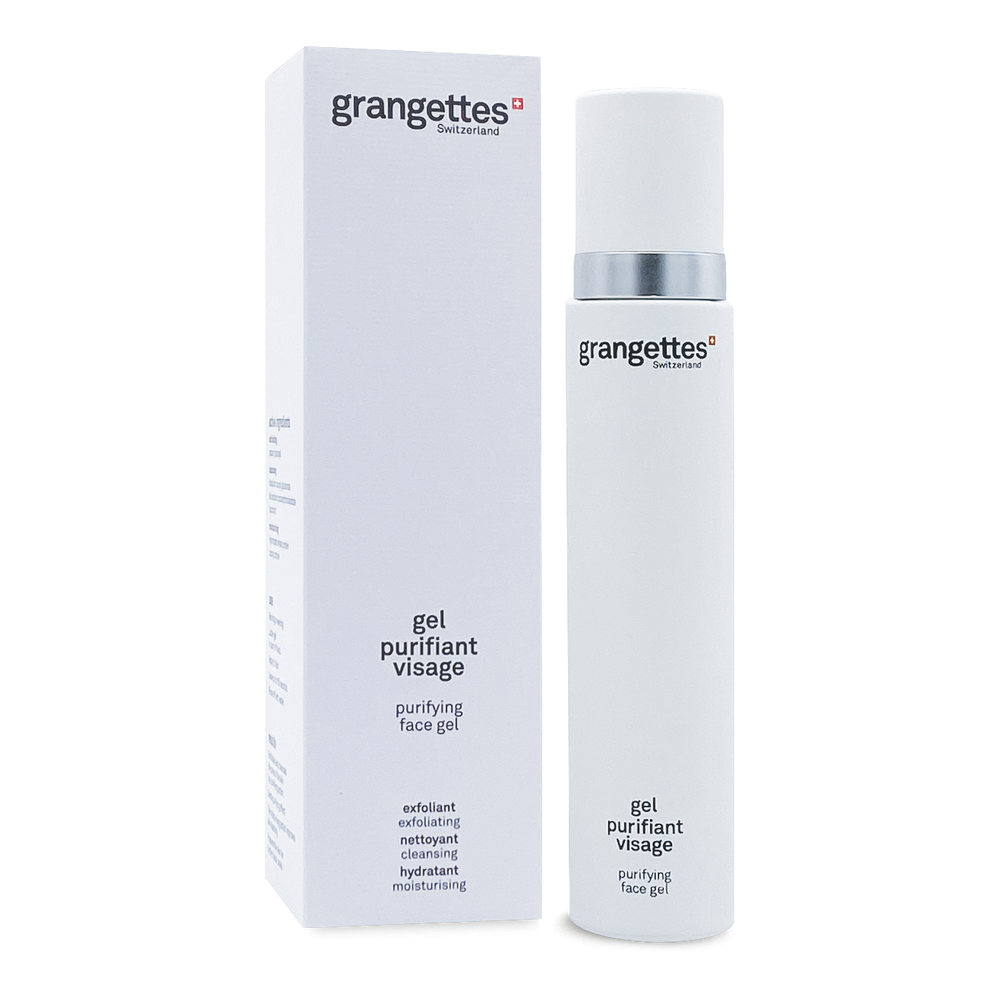Tip #1: understand the hormonal origin of chin pimples
Before trying to eliminate them, it is important to understand why pimples appear on the chin. For many people, especially women, this area is sensitive to hormonal variations. And the impact of hormones on the skin can be significant. Hormonal acne flare-ups can occur during periods, pregnancy, menopause or due to an underlying hormonal imbalance such as polycystic ovary syndrome (PCOS). Androgens stimulate sebum production, which clogs pores and leads to the appearance of comedones or inflammatory cysts.
Therefore, if you notice that your chin pimples appear at a specific time in your cycle or persist despite a good skincare routine, it may be helpful to consult a dermatologist or an endocrinologist to perform a hormonal assessment.
Tip #2: gently but effectively cleanse the skin
Overly aggressive cleansing can worsen chin pimples. Use a gentle, non-comedogenic cleanser specially formulated for acne-prone skin. Avoid scrubs with too abrasive grains on this delicate area. Favor gentle active ingredients like coconut or hydrolyzed wheat protein, which unclogs pores, or zinc, which regulates sebum.
Cleanse your face morning and evening, especially after sweating or wearing a face mask ("maskne," acne related to mask-wearing, can worsen skin eruptions on the chin). Don’t forget to rinse your face well with lukewarm water and dry it with a clean towel.
Your ally: the Grangettes purifying face gel! Thanks to papain, it offers a very gentle peeling effect and removes dead skin cells for a revitalized complexion. To cleanse and eliminate impurities and excess sebum, you can rely on ingredients derived from coconut, such as disodium cocoyl glutamate and disodium cocoamphodiacetate.
- Regular price
- CHF 36.00
- Regular price
- Sale price
- CHF 36.00
- Unit price
- per
Tip #3: apply a single targeted local treatment on the chin
Localized treatments are essential to quickly treat an already established pimple on the chin. Creams or gels containing bisabolol, vitamin B12, or ectoine help reduce skin inflammation, kill acne-causing bacteria, and promote healing. Apply a local treatment in the evening, directly on the pimple, avoiding the lip or eye contours.
Be careful not to multiply overly aggressive products, risking weakening the skin barrier. Excess treatments can cause redness, peeling, and even worsen acne. The idea: one cream, and that’s it!
Here, the Grangettes soothing cream will take the best care of you: it is precisely designed to meet the specific needs of the skin, such as sebum regulation, redness, dryness, and acne. Enriched with cyanocobalamin (vitamin B12), it balances sebum production for clear and healthy skin!
- Regular price
- CHF 35.00
- Regular price
- Sale price
- CHF 35.00
- Unit price
- per

Tip #4: adopt a minimalist skincare routine
This is one of the most common mistakes: faced with a feeling of helplessness, you try many products to try to get rid of your enemy! However, to observe the real effect of a cosmetic product on the face, it takes several weeks. A skincare routine composed of too many products can maintain chin pimples. The secret? Opt for a minimalist routine, with a cleansing gel and a face cream, no more, no less!
Make sure to choose non-comedogenic cosmetic products, light and formulated for blemish-prone skin. But keep in mind that moisturizing the skin is crucial, even in case of oily skin. Dehydrated skin compensates by producing more sebum, which worsens pimples.
Tip #5: avoid touching or popping chin pimples
Touching, scratching, or popping a pimple only spreads bacteria, worsens inflammation, and increases the risk of scarring. If a pimple is particularly painful or large (cystic), it is better to consult a dermatologist for appropriate treatment.
A hydrocolloid patch can be a good solution to protect the pimple, absorb sebum, and promote healing without manual intervention. But beware: it is a product that repairs problems. To prevent your pimples from returning in the long term, it is indeed your skincare routine that will make all the difference!
Tip #6: monitor your diet
Although diet is not the main cause of acne, some foods can influence the appearance of pimples, especially on the chin. Products rich in fast sugars, dairy products, and ultra-processed foods can sometimes promote inflammation and hormonal imbalances.
Favor a balanced diet, rich in fruits, vegetables, omega-3 (fish, nuts), and low in added sugars. Drinking enough water and avoiding excess caffeine or alcohol can also help purify the skin from the inside.
Tip #7: consider stress and lifestyle
Stress is a factor often overlooked in skin problems. It acts on hormones (notably cortisol), which in turn stimulate sebum production. A stressful lifestyle, little sleep, or a chaotic rhythm of life can directly reflect on your skin.
Incorporating stress management techniques such as meditation, yoga, sports, or simple regular breaks can improve not only your overall well-being but also the condition of your skin. Sleep also plays a key role: well-rested skin regenerates better, so make sure to sleep at least 8 hours a night!

Tip #8: consult a professional if acne persists
If despite all these efforts, chin pimples persist or worsen, it is essential to consult a professional. A dermatologist can prescribe treatments adapted to your type of acne!






